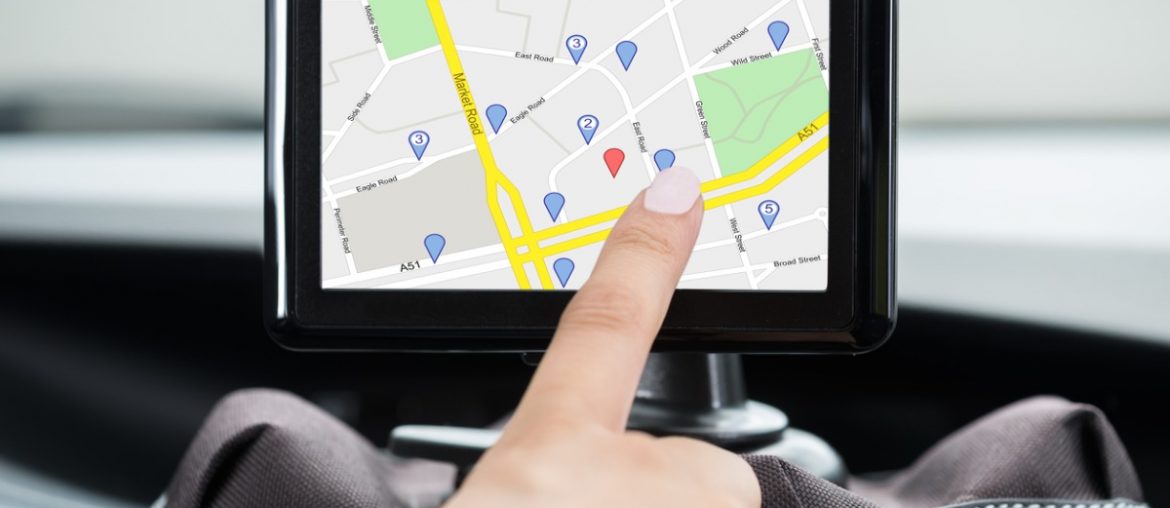Driving a truck isn’t the same as driving a regular delivery vehicle. Routing is vital for transporting goods long distances. Small changes in efficiency have a significant impact on your bottom line. Bad route planning means delayed deliveries, higher maintenance fees, and even the difference between success and failure.
With all of that in mind, is it worth using Google Maps for trucks? We don’t think Google Maps is the best choice for your needs. Here’s why.
Things That Affect Route Planning
Route planning is more complex than getting a vehicle from Point A to Point B. An optimized route has a hard minimum in terms of time and costs, and anything less than that is ultimately more expensive for you and your clients. This is particularly apparent in several areas.
ETAs
Customers have expectations for deliveries. Experienced customers know that it’s not realistic to plan a cross-country delivery down to the minute, but they can reasonably expect to have things show up on a predetermined day.
Poorly-planned routes may have to deal with road conditions, bad weather, vehicle size issues, or special cargo considerations. Failing to consider these can result in slower deliveries and breaking an ETA.
Customers may forgive this if it’s something clearly out of their control, like an unpredicted closure in a mountain pass that’s the only viable route without days of additional travel. However, if they believe you should reasonably have expected a problem, they may never hire you again.
Fuel Consumption
Bad routes mean higher fuel consumption, which leads to higher costs for each trip. Depending on the locations of gas stations, issues with a route could result in spending far more on gas than you should.
Lower Route Capacity
Lower route capacity primarily applies to local, multi-stop trucking. An optimized route will help you deliver to more houses in the same period, ultimately increasing your overall effectiveness and reducing shipping costs for your customers.
What Makes For A Good Route Planner?
When deciding whether it makes sense to use Google Maps for truck drivers, it’s important to consider what makes for a good route planner. Here are some of the primary factors that truckers, in particular, should keep in mind.
- Real-Time Information: Real-time information on routes can alert you to problems like slowdowns or lane closures well before you reach them. It’s not always possible to avoid these, but a good route planner can often find a faster alternate route and recalculate variables like your mileage to ensure the change doesn’t hurt you too much.
- Automatic Client Updates: Some route planners can connect with a client’s systems and give them regular updates. Staying in contact with customers keeps them happier, and many are more forgiving of transportation issues if they know right away. That gives them time to adjust expectations on their end.
- Machine Learning: More recently, route planners are starting to use machine learning to uncover trouble spots and figure out which routes work in the real world. By examining vast troves of data, a good route planner will select the best route more often.
Does Google Maps Make Sense For Truckers?
When using Google Maps for trucks drivers have to consider whether it meets their needs.
The most obvious issue here is that Google Maps is primarily designed for regular drivers, not the trucking industry. The impacts of vehicle size, priorities when traveling, and delivery requirements all exceed what Google Maps can comfortably handle, from the height of specific overpasses to the width of roads you may need to go down.
Here are some other things that truckers must consider when working.
- Time Spent: Truck drivers must obey hours-of-service regulations, including hourly driving limits, mandatory breaks, and weekly limits on driving. Free route planning apps rarely consider these, but professional software accounts for federal legislation when selecting a route for you.
- Vehicle Types: Large trucks often travel slower than other vehicles. Most free apps expect the driving speed of an SUV or sedan, so they calculate the time to destination with that in mind. For long-haul trucking, this difference can end up being a matter of days.
- Number of Stops: Trucking often involves multiple stops on one route. A package delivery vehicle may stop at over a hundred locations a day, while a long-haul trucker may stop several times a day for food, gas, sleep, and other necessities. Google Maps’ 10-stop limit is far too low for trucking.
- Route Limits: Truckers may need to avoid highways or toll roads while traveling. Trucks may also need to avoid roads that are too small, which can be problematic for some delivery needs. Good software can determine whether a specific vehicle is appropriate for delivery.
- Special Situations: Trucking often involves dealing with special situations, such as mandatory downtime for maintenance or an inability to go over certain inclines. Free software does not have options that let you plan for these.
In short, there’s no point in asking questions like “does Google Maps have truck routes?” because Google Maps fundamentally isn’t designed to meet the needs of modern truckers.
Few types of software are perfect, and sometimes you can get away with missing one or two functions. However, there are too many areas where Google Maps falls short for us to suggest using it for anything except the shortest and most direct deliveries.
Special Delivery Formats
While we don’t like Google Maps for most purposes, there are a few special delivery situations when it might make more sense. For example, if a delivery needs to go somewhere with limited vehicle access, Google Maps may be able to plan the last leg of the trip and help a trucker walk, bike, or even use a trolley to carry a package to its destination.
The important thing to remember here is that while most software is not suitable for regular trucking needs, it may still be helpful for unusual cases. That’s why it’s good to understand and remember some alternative software, even if it’s not part of your regular planning.
What Trucker-Specific Software Does
Trucking software understands the differences in route planning and route optimization, including everything that matters for good deliveries. The best software has parameters that consider things like shift patterns, vehicle weight limits, and even package loading order. All of these ultimately help ensure faster and better deliveries.
Here are some other benefits of trucking software.
Faster Route Planning
Automated software can reduce the speed of route planning from hours to minutes. Without automating the process, you’ll have to look at things like road sizes, height limits, and the weight limits on bridges individually. These are things regular drivers never have to worry about, but they’re vital considerations for the speed of deliveries and your safety.
Reduced Fuel Bills
Optimized routes can help you spend as little as possible on fuel. There’s no way to avoid these costs, but an optimized route can keep fuel bills competitively low and help put more money into your pocket.
Live Tracking
As we discussed above, live tracking is especially valuable for customers. Longer trips require bigger delivery windows, but as you get closer, these updates can help your client know exactly when you’ll arrive.
That means they can unload your vehicle quicker, load anything they need you to haul away, and free you up to get to your next job quicker. Live updates can also help clients decide what to do in emergencies, such as route closures.
In some cases, live tracking can also help address customer satisfaction. For example, if you need to pick something up mid-day, live tracking can locate the best vehicle for doing that while minimizing the impact the change has on other deliveries.
Higher Productivity
Optimized routes ultimately mean higher productivity for both you and every other driver in your fleet. While this can be hard to see on a day-to-day level, using optimized routes can help you finish more jobs each month. That’s a significant increase in your pay for the same time spent.
Higher Customer Satisfaction
Finally, optimized routes cumulatively result in higher satisfaction for all of your customers. They receive many benefits, including accurate delivery windows and more predictable costs for each trip. Happy customers are far more likely to hire you again.
What Should I Use Instead Of Google Maps For Trucks?
There are many options for trucking-specific route software, but finding the right option requires analyzing your specific needs and comparing that to the features available to you. Software like MapQuest may be better than Google Maps for simple and local deliveries, but it’s not good enough for truckers.
Workwave’s Route Manager software is a company-sized program that can help optimize routes and deliveries for multiple drivers. Its data-focused engine tracks progress in real-time, helping you adjust to situations as they occur.
Route Manager’s trucker-focused components include practical software that allows for daily route instructions that go straight to your phone or mobile device. Order changes sync instantly, and it’s even possible to add changes mid-route.
As a bonus, Route Manager can load expected routes up to three days ahead of time, allowing drivers to look ahead and plan accordingly.
For dispatchers and company owners, Route Manager’s advanced features can help track delivery management, create reports, and support coaching to help train newer drivers.




